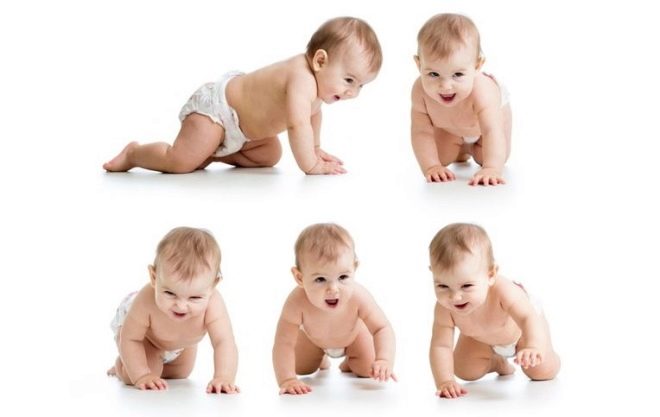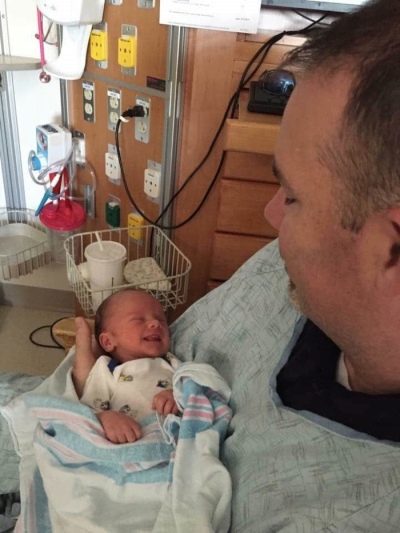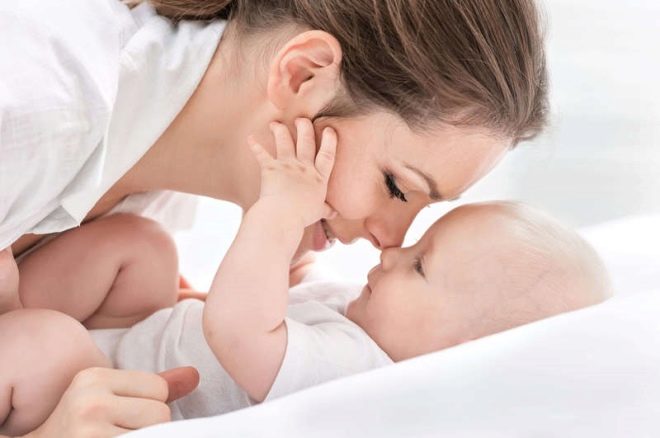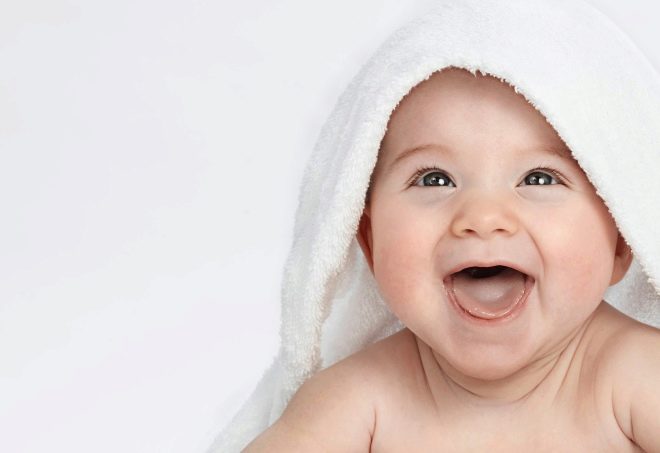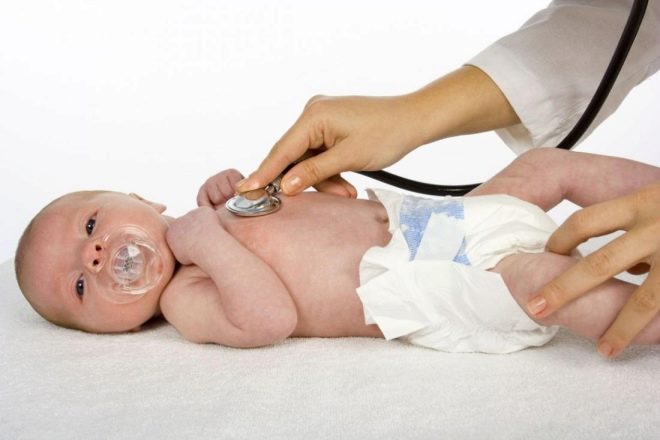When does a baby start to smile?
All mothers with impatience are waiting for the first conscious smile performed by the baby. It is a sign of good emotional contact and means a lot to parents. In this article we will tell you when children start to smile and whether they can be taught this.
How does the skill develop?
Conscious smile becomes possible when the baby successfully passes the initial stage of mental and emotional development. The newborn is almost not in contact with the outside world, he is in a state of deep inner concentration. This is important so that the process of adaptation to a new habitat other than the intrauterine one proceeds more quickly. The only contact at this age is crying. They are a child shows his displeasure with wet diapers or fatigue, hunger or pain.
A smile as a reaction to recognition comes to a loved one later than an unconscious smile. Many have noticed how newborns smile in their sleep. It is difficult to judge whether they have dreams, but science does not exclude this. However, a smile or half-smile in this case is an expression of the formation of the nervous system of the baby - an involuntary impulse contraction of the facial muscles.
Such a first smile is not connected with emotions, it is exclusively physiological. But an infant can emotionally smile at his mother before he starts recognizing her face and makes him stand out from other faces and objects. By the end of the second month of life, the baby’s vision becomes sharper; he can already focus his gaze on faces and objects not far from his own face for a while. It is at this age that the baby can demonstrate its first real smile.
The ability to express emotions in a smile is of great importance and never appears isolated from some other skills. As soon as the toddler starts recognizing mom and dad at 2-2.5 months, he not only can show it with a smile, but also shows a general revival: in response to my mother's voice or touch, she begins to intensively swing arms, legs, arch her back, raising her tummy up. Some in 2 months begin to roar and shuffle, and the first sounds in most cases also coincide with the first full-fledged smile.
All these signs mean timely and normal emotional and mental development, which for a baby is no less important than physical development.
In the future, when the little one begins to learn how to sit, crawl, walk, it is the normal mental development that will provide the very necessary motivation for mastering the new. Without it, physical development will also slow down.
The reasons for his absence
Impaired terms of emotional development can be observed in premature babies, whose birth occurred prematurely. For some time they have to “catch up” with their peers in many positions, and therefore the emotional sphere of kids begins to develop somewhat later. But an involuntary smile, even in premature babies, usually manifests itself in the first days of life. Such babies can roll their eyes when they fall asleep and smile on a par with full-term babies.
A certain violation of the terms of psychological maturation can be observed in children who, during pregnancy, experienced physical distress — Rhesus conflict, hypoxia, and chronic lack of vitamins and minerals.Generic complications, head injuries, cervical and hemorrhage in the brain after birth can also lead to disruption of certain parts of the cerebral cortex and slow mental maturation or mental illness, but it is almost impossible to diagnose them at such a tender age.
Doctors have long noticed that children who were abandoned at the maternity hospital and who ended up in the infant's house begin to smile very late, and some, in general, do not want to do this. In this regard, experts concluded that contact with the mother (tactile, voice) is very necessary for the baby from the very first days. An infant who is deprived of this contact feels lonely, his emotionality is developing very slowly.
It is noteworthy that the most important is tactile contact. It is easy to understand by analyzing how children, deaf or blind from birth, learn to smile. They do it at about the same time as the healthy peers, with the obligatory condition that the mother is near, she touches the baby, strokes it, breastfeeds.
Insufficient level of communication slows down the baby in the development of the psyche and full-fledged responses.
Much depends on the nature of the baby, on the type of temperament with which he was born. Thus, sanguine and choleric people begin to flourish with response smiles a little earlier than drowsy and lazy melancholic people. There are, in general, kids who first begin to frown - it looks very funny and unusual. But this, too, can be considered a manifestation of normal mental development.
What do smiles mean?
Since a nursing baby is significantly limited in the ways of expressing his emotions, his cry and his smiles can mean a rather large range of emotions. This is not only the joy of recognizing a native person, but also a sign of well-being. So, a baby can smile just like that, when he is full, when he is dry and warm, when he is sleeping and he is not disturbed by anything - neither colic, nor little gas, nor other sounds. This is how a common situation should be understood, when a baby, fed, dressed, and put in a comfortable bed, looks at the ceiling at one point and smiles. He is just good and it should not bother his parents.
Inappropriate smiles play a large role in diagnosing mental illness, autism spectrum disorders, but only after the child is 3 years old. By this age, mental illnesses, if any, will have other symptoms and manifestations.
As the speech function develops, children begin to smile more targetedly, and they can also smile in their sleep when they see familiar images or dream about their mother. Other types of smiles (mocking, for example) are not familiar to kids. They will meet them later, usually after two years.
To teach a baby?
Learning the art of smiling should start from the first day of a child’s life. And the best exercise is your own example. The more often an adult smiles at a child, the more often he sees such a facial expression, the more likely he is to want to repeat it and smile back. Therefore, the main thing is communication, an emotional exchange of joy in combination with touch, a gentle voice. All this will help the child to quickly understand that he is in complete safety, that the world in which he came is not at all hostile.
It often happens that after the first smile the crumb ceases to please her parents and does not repeat this facial expression for a long time. This happens.
It is not enough to teach the child, you need to constantly maintain this new emotional skill in him.
Sometimes parents do not notice that they themselves spend most of the day with a gloomy and stern expression on their faces. Children, as highly sensitive detectors, instantly “read” this and try to imitate their own people. So parents need to learn to smile and show their own emotions with the child.
A little later, the child will begin to laugh, usually it happens by 5 months. And at first, strange sounds may frighten him. Here it is better for parents not to interfere, rather quickly the baby will understand that it can produce strange frightening sounds on its own, and therefore they are absolutely not dangerous. From this moment begins the period of laughter without a reason - the child simply “rehearses”, and the mother begins to worry that he laughs at everything and constantly.
When do I need to see a doctor?
It is necessary to show the child to the pediatrician with complaints about the absence of smiles in particular and the presence of a weak emotional picture if there are additional difficulties in his development. The absence of a smile in a two-three-month-old baby, combined with general muscular weakness and the absence of even the slightest attempts to establish eye contact and attempts to hold the head in the prone position is a very disturbing sign.
Lack of recognition, reaction to the mother’s voice, touch, lack of gaze, poor appetite, restless sleep, and frequent crying not connected with hunger or the need to change the diaper - these are signs that are a sign that you should go to a pediatrician, Get a referral to a brain examination with one of the existing methods, and subsequently - to receive treatment.
The child begins to smile when all the necessary conditions for this are met - both internal and external. That is why it is necessary to begin with yourself and the analysis of communication with a child And only when nothing helps, medicine will come to the rescue.
About when the child starts to smile, see the next video.



